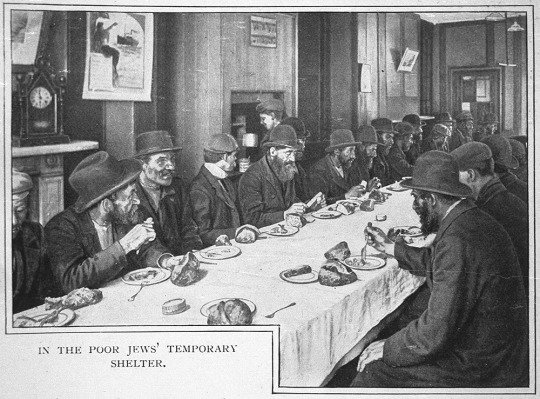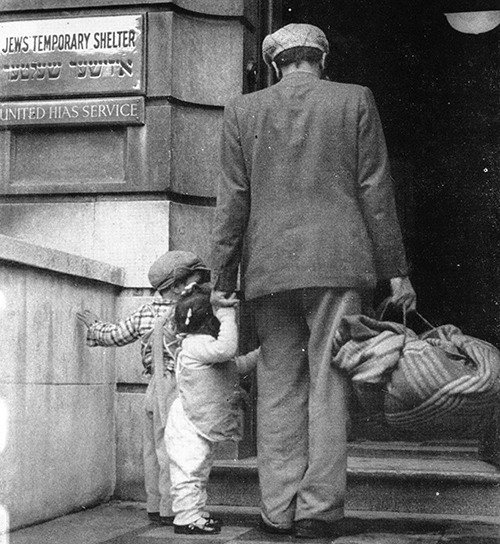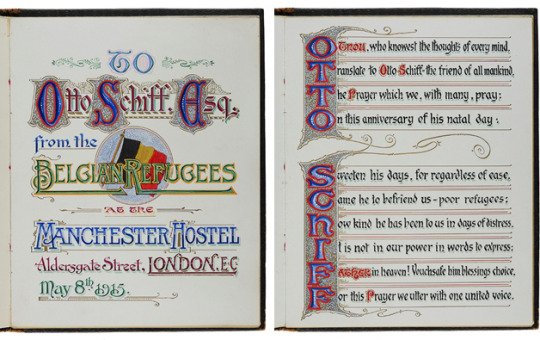The Jews’ Temporary Shelter
by Ali Quine, Assistant Curator
For refugees
fleeing religious, racial or political persecution, arriving in a strange new
country can be extremely harrowing. Adjusting to unfamiliar cultural practices
and languages while attempting to process the traumas faced back home are made
considerably more difficult when confronted by a hostile or indifferent reception.
At the end
of the 19th century a huge number of Jewish people fled religious persecution
in Eastern Europe, with many of them settling in the East End of London. Many
arrived with few possessions and had no contacts in the city, leaving them
vulnerable to exploitation.
The already established Jewish community took
numerous steps to make sure new immigrants settled in without harming the
established community’s reputation. The Jews’ Temporary Shelter (JTS) was founded
in 1885 to help assist these poor Jewish immigrants, providing them with temporary
accommodation (up to two weeks), meals, and possible contacts for work.

Though the
services provided were basic, the Jews’ Temporary Shelter offered a welcoming
environment to thousands of immigrants, continuing to assist refugees from
Belgium during World War I and Jews fleeing from Germany and Austria in the
1930s.
 A man enters the Jews Temporary Shelter with two children and carrying a bundle of his belongings, 1950s
A man enters the Jews Temporary Shelter with two children and carrying a bundle of his belongings, 1950s
A key
advocate for The Jews’ Temporary Shelter was Otto Schiff, who was awarded both the
OBE and CBE for his work assisting refugees after both world wars. In March
1933 he established the Jewish Refugees Committee, pledging that no refugee
would become a public charge. Despite the enormous numbers arriving in Britain,
sufficient money was allocated for their upkeep by the Central British Fund and
the council for German Jewry until the end of 1939.
Otto Schiff
was elected Life President of The Jews’ Temporary Shelter in 1948, and the
impact he had on countless Jewish refugees’ lives is insurmountable. This can
be seen in a book held at The Jewish Museum (below), which was presented to Otto Schiff
by a group of Belgian refugees, thanking him for all of his help. The book
contains a hand decorated prayer/poem dedicated to Schiff, and four pages of
signatures by the refugees.

After the
Second World War, the shelter continued to assist refugees fleeing persecution,
including Jews from India, Hungary, Egypt, Aden and Iran. Although the shelter
no longer provides accommodation, it continues its work today by offering
grants to help people with accommodation-related expenses.
 The kitchen and one of the bedrooms at the Jews’ Temporary Shelter in Willesden, where the shelter relocated from Aldgate in 1973.
The kitchen and one of the bedrooms at the Jews’ Temporary Shelter in Willesden, where the shelter relocated from Aldgate in 1973.The Jewish
Museum holds a large collection of objects and ephemera relating to the Jews’ Temporary
Shelter. One area of particular interest are the deed boxes (below) which were used to
keep articles belonging to guests at the shelter.
Through the years some of
these objects were left behind, and have ended up in the museum collection.
Though these items have since lost their personal significance, they give a
great insight into the frantic and often traumatic experience which refugees
still continue to face today.
